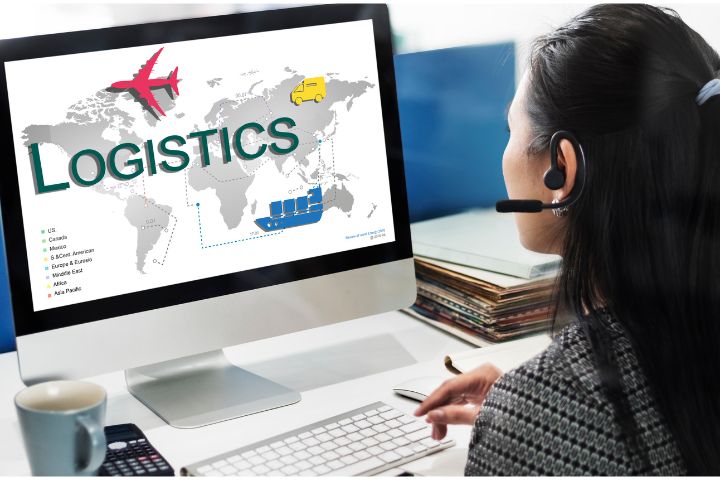Freight Solutions Tracking: Revolutionizing Logistics with Technology

In the ever-evolving landscape of logistics and supply chain management, the role of technology has become increasingly vital. One of the transformative elements that have reshaped the logistics industry is the evolution of freight tracking technology. This article delves into the journey of freight tracking with supply chain visibility software, exploring how it has evolved from manual systems to automated marvels, and the key technologies powering this revolution.
I. Evolution of Freight Tracking Technology
From Manual to Automated Systems:
The origins of freight tracking can be traced back to manual record-keeping systems, where handwritten documents and ledger books were the norm. This cumbersome process was not only time-consuming but also prone to errors and inefficiencies. As the demand for real-time information and accuracy grew, manual systems paved the way for automated tracking solutions.
The advent of barcode technology marked a significant milestone in this evolution. Barcodes allowed for quicker data entry and retrieval, significantly reducing the chances of human error. However, it was the integration of GPS (Global Positioning System) technology that truly revolutionized freight tracking. GPS enabled real-time location tracking, providing unparalleled visibility into the movement of goods across the supply chain.
Milestones in Technological Advancements:
The evolution of freight tracking technology did not stop with GPS. RFID (Radio-Frequency Identification) technology emerged as another game-changer. RFID tags attached to shipments allowed for automatic identification and tracking, eliminating the need for line-of-sight scanning. This advancement enhanced the speed and accuracy of tracking, further optimizing logistics processes.
The integration of IoT (Internet of Things) devices and sensors took freight tracking to a new level. These devices enabled the collection of real-time data on various environmental factors, such as temperature, humidity, and vibration, ensuring the integrity of sensitive shipments. Moreover, cloud computing and big supply chain and data analytics became instrumental in processing and analyzing the vast amount of data generated by these tracking technologies.
II. Key Technologies in Freight Tracking
GPS and RFID:
GPS technology has become the backbone of modern freight tracking systems. It provides real-time location data, enabling logistics data analysis companies to track the movement of shipments across the globe. GPS has proven crucial not only for route optimization but also for enhancing overall supply chain visibility.
RFID technology, on the other hand, relies on radio frequency signals to identify and track shipments. Unlike traditional barcodes, RFID tags do not require a direct line of sight, allowing for automated and non-intrusive tracking. This technology is particularly valuable in scenarios where visibility and traceability are paramount, such as in high-value or time-sensitive shipments.
IoT Devices and Sensors:
The proliferation of IoT devices and sensors has introduced a new era of intelligence in freight tracking. These devices are capable of monitoring various parameters, including temperature, humidity, pressure, and even the opening of containers. In the pharmaceutical and food industries, for instance, maintaining specific environmental conditions during transit is critical, and IoT devices ensure that these conditions are met.
Cloud Computing and Big Data Analytics:
The integration of cloud computing and big data analytics has transformed the way shipping logistics company handle and leverage tracking data. Cloud-based platforms offer scalable and accessible storage solutions, allowing for the seamless exchange of information across the supply chain. Big data analytics processes this wealth of data, extracting valuable insights to optimize routes, predict maintenance needs, and enhance overall operational efficiency.
III. Benefits of Advanced Freight Tracking
Real-Time Visibility and Control:
One of the primary advantages of advanced freight tracking is the real-time visibility it provides throughout the supply chain. The freight logistics companies can monitor the location and condition of shipments at any given moment, allowing for proactive decision-making. Real-time data empowers supply chain managers to identify and address issues promptly, reducing the risk of delays and improving overall responsiveness.
Enhanced Security and Compliance:
Advanced tracking technologies contribute significantly to enhancing the security of shipments. RFID tags and GPS tracking help deter theft and unauthorized access to goods in transit. Moreover, these technologies assist in ensuring compliance with regulatory requirements, especially in industries with stringent standards for transportation management systems and storage, such as pharmaceuticals and chemicals.
Improved Efficiency and Cost Savings:
The implementation of advanced freight tracking technologies leads to improved operational efficiency and cost savings. Real-time data enables better route optimization, reducing fuel consumption and transportation costs. Additionally, IoT devices and sensors contribute to preventive maintenance practices, minimizing the risk of equipment failures and costly delays. Overall, the efficiency gains translate into a more streamlined and cost-effective supply chain.
IV. Challenges and Solutions
Technological Integration Issues:
While the benefits of advanced freight tracking are evident, the implementation of these technologies is not without its challenges. One common hurdle is the integration of new tracking systems with existing infrastructure, particularly in large and established logistics networks. Overcoming this challenge requires careful planning, collaboration, and often, phased implementation to minimize disruptions.
Data Privacy and Security Concerns:
As the volume of tracking data increases, so do concerns regarding supply chain analytics data sets privacy and security. Protecting sensitive information about shipments and their routes is paramount to prevent unauthorized access and potential exploitation by malicious actors. Addressing these concerns requires robust cybersecurity measures, including encryption, access controls, and continuous monitoring to detect and mitigate potential threats.
Overcoming Implementation Barriers:
The transition to advanced freight tracking technologies may face resistance from traditional stakeholders or encounter organizational inertia. To overcome these implementation barriers, companies need to invest in comprehensive training programs to familiarize staff with the new systems. Additionally, clear communication about the benefits and long-term advantages of the technology can help build internal support and facilitate a smoother transition.
Conclusion:
Freight tracking technology has come a long way from manual record-keeping to the sophisticated, real-time systems we see today. The integration of GPS, RFID, IoT devices, and cloud computing has revolutionized logistics, providing unprecedented visibility, security, and efficiency.
As the industry continues to embrace these advancements, it is essential for companies to address challenges such as integration issues and data security concerns. The benefits, however, are clear – improved supply chain management, enhanced security, and significant cost savings. In the ever-evolving landscape of freight logistics services, embracing and adapting to the latest freight tracking technologies is not just a choice but a necessity for staying competitive in the global market.
Also Read : Five Key Elements Of Supply Chain Execution Systems


